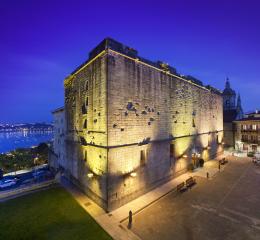Green Spain route II
Route of 7 nights
Paradores on the Route
- Parador de Hondarribia
- Parador de Argómaniz
- Parador de Limpias
- Parador de Fuente Dé
- Parador de Cangas de Onís
- Parador de Vilalba
Enjoy the picturesque Cantabrian coastline from the Basque coast to Galician territories, entering the magnificent Picos de Europa.
From €495 /person
Route available in the months of February to June and from September to October 2024.
This route starts on Sunday
Day 1
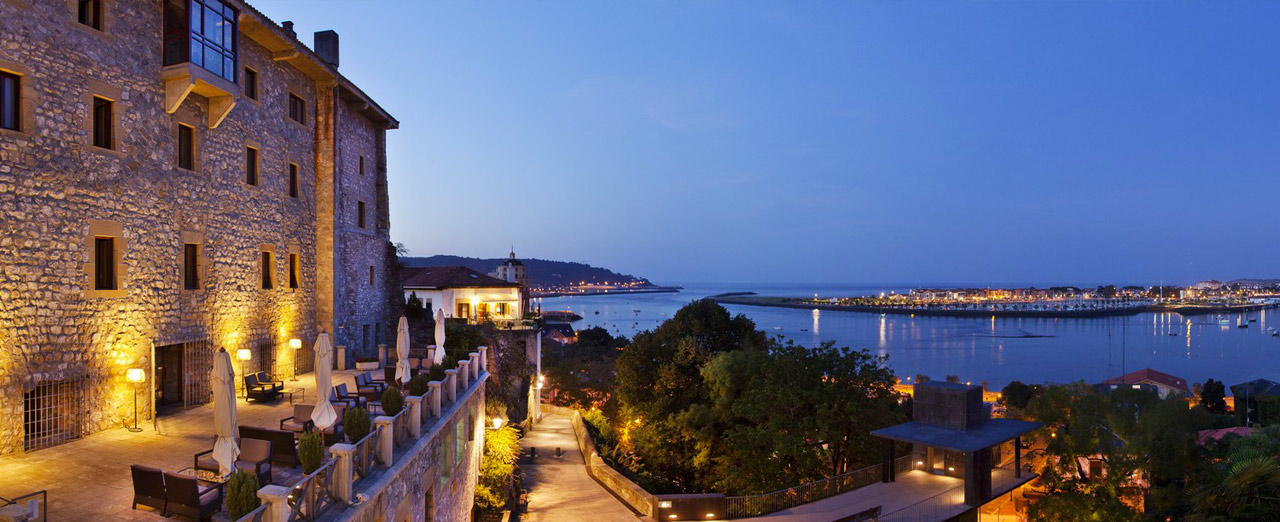
Parador de Hondarribia
Pza. de Armas, 14, 20280, Hondarribia (Guipúzcoa)
+34 943645500
[email protected]Sunday
We begin this journey of almost 600 kilometres in the west side. Hondarribia is one of the most beautiful and charming fishing villages of the Cantabrian coastline. Highlights include its walled old town, declared Monumental Complex, with the Puerta de Santa María Atenea and its main Calle Mayor, with old country houses among which the city hall, the Zuloaga house or the Iriarte house stand out. Walking through these streets is a true pleasure, even more if we add the possibility of tasting a delicious cuisine and its famous pinchos. Don’t miss the opportunity to visit the port. San Sebastián is just a few kilometres away and walking on the Concha beach and enjoying this beautiful city and its old town, a culinary heaven dedicated to “miniature cuisine”, is a must. Hondarribia is close to France and it can be a good starting point to discover the glamorous coastline of the French Basque Country.
Day 2
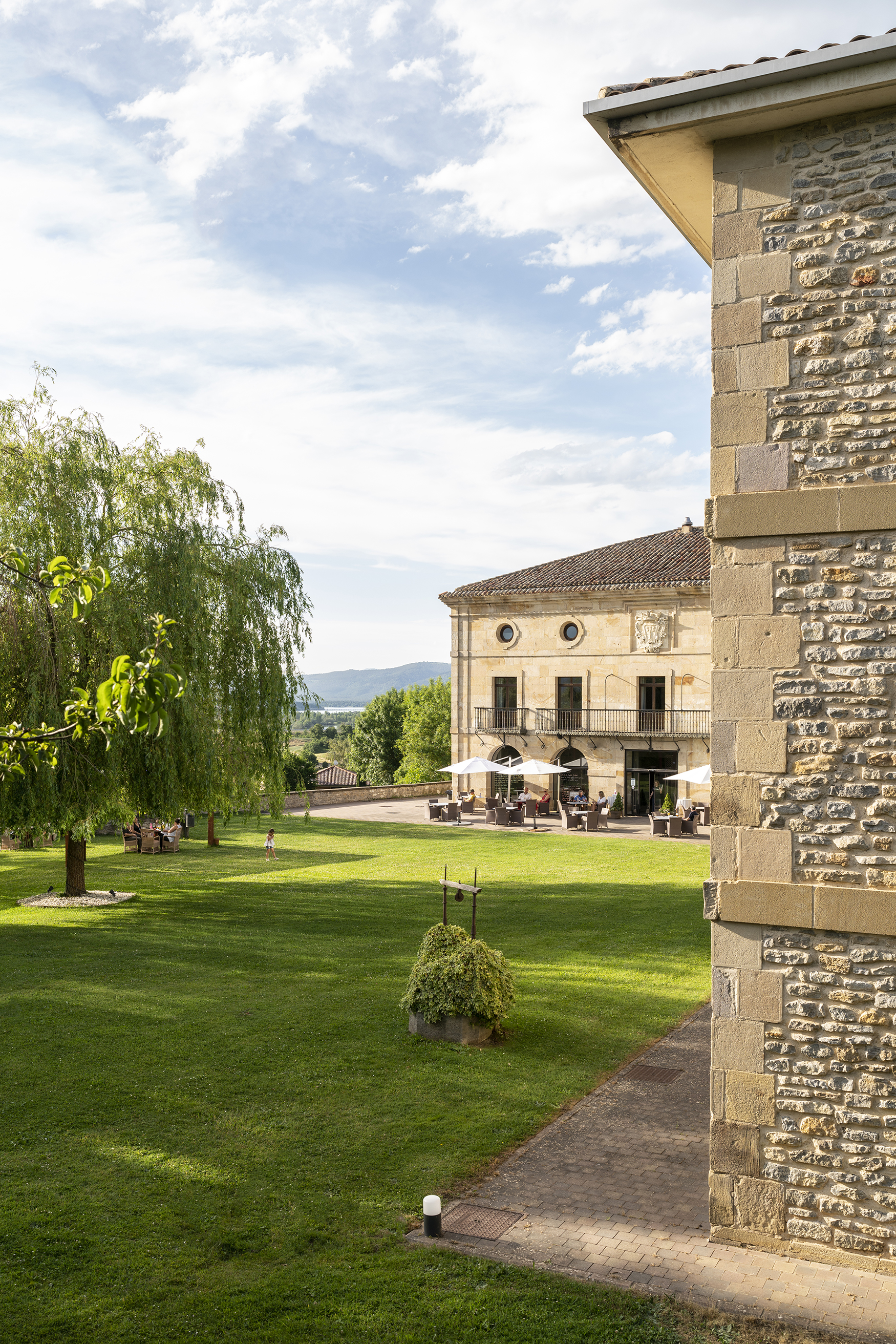
Monday
In the middle of the Álava plain, the Parador de Argomaniz is a few kilometres away from Vitoria-Gasteiz. The city offers an undeniable quality of life, with a great number of natural spaces and a green belt. You will find many museums in this city. Also, all of them are located in buildings that should be visited by themselves. Some of these museums that are worth highlighting are Artium, Basque Museum of Contemporary Art, Museum of Sacred Art, Natural Sciences Museum or BIBAT, Fournier Cards Museum and Archaeology Museum. Don’t forget to visit the beautiful Santa María cathedral or old cathedral, whose renovation inspired Kent Follet for his acclaimed novel “The Pillars of the Earth”, the medieval old town, the San Miguel and San Pedro churches, the San Vicente tower, the Villasuso Palace and the Montehermoso Palace. Same as in the rest of Euskadi, the txikiteo (having small glasses of wine) is a deep-rooted tradition. Check the dates of the Pintxo Pote -these vary depending on the area- in which once a week, the bars include a tapa with every drink for an affordable price. There are several routes!
Days 3 and 4
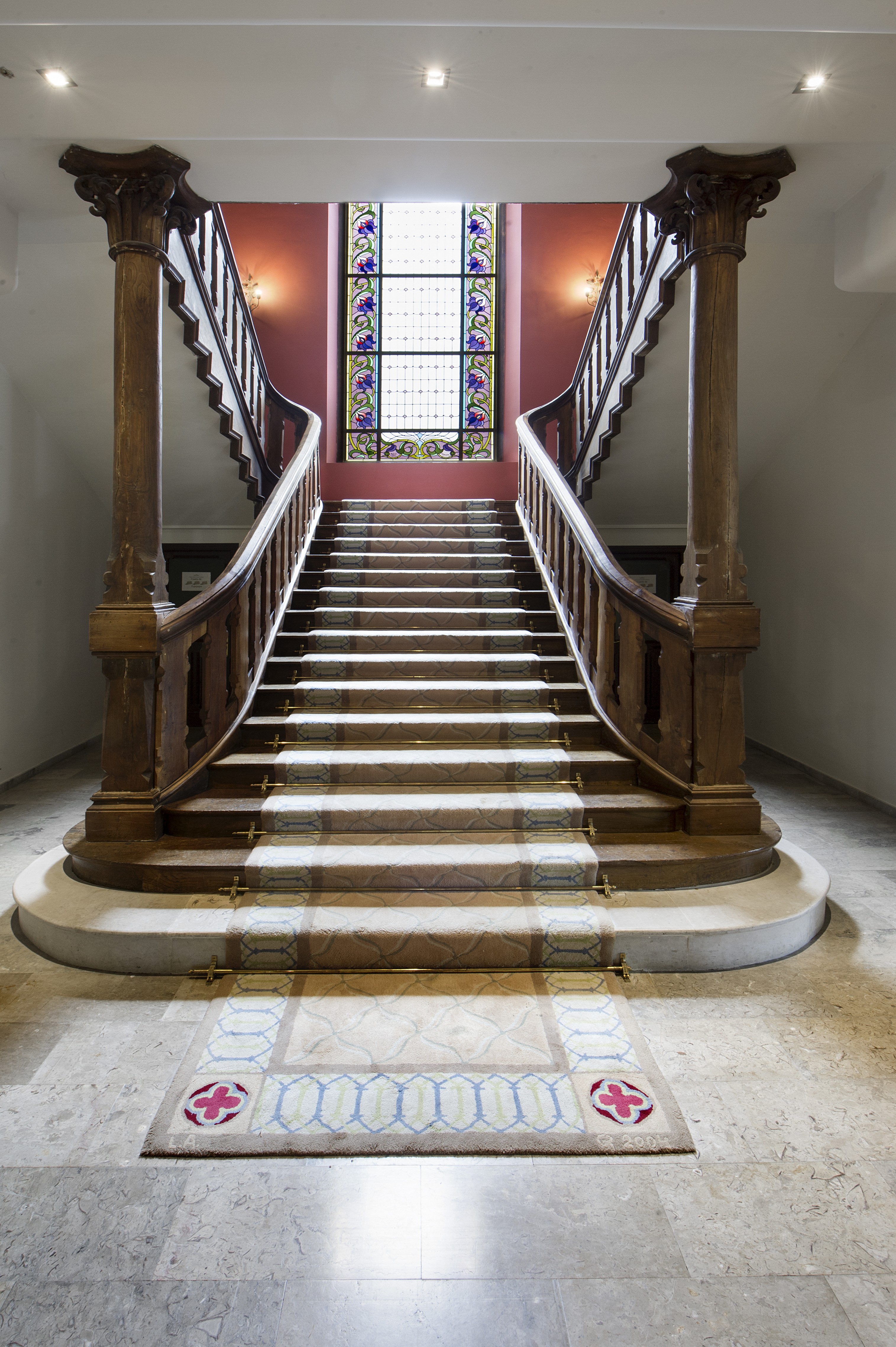
Tuesday and Wednesday
We enter Cantabrian territories. Limpias is famous due to the Christ of Agony, popular for his manifestations of life by means of tears, sweat and blood, who you will find in the Church of San Pedro. There are many interesting fishing towns nearby, such as Laredo, where La Salvé, one of the most extensive and beautiful beaches in the region, Castro Urdiales and Santoña can be found. This area is ideal for rowing and canoeing. A visit to the Cabárceno Nature Park, a 750-hectare park with more than a hundred animal species from the 5 continents in semi-freedom, or the Ansón Valley is also interesting. Santander, with its fried squid and its Botín Centre, and Bilbao, with its famous pintxos and its Guggenheim Museum, are also other attractive places to visit. You must try the artisan anchovies in olive oil, the tinned food that would also be the perfect souvenir.
Day 5
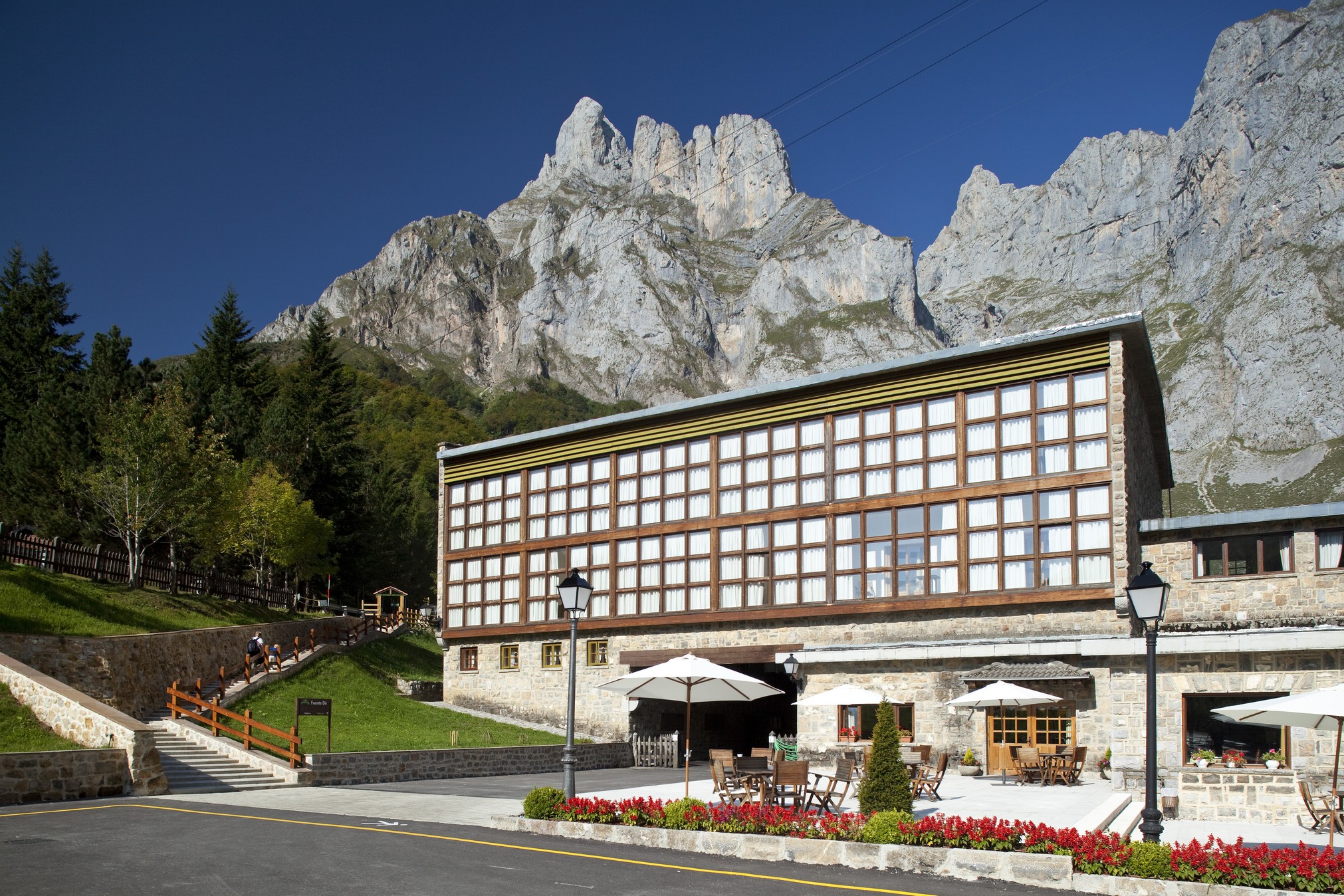
Parador de Fuente Dé
Fuente Dé, s/n, 39588, Fuente Dé, Camaleño (Cantabria)
+34 942736651
[email protected]Thursday
We continue to delve into the wild Picos de Europa through the traditional Jacobean route that entered Liébana from the coast and went along the Nansa river and Valle de Lamasón. From there, there used to be two paths, one through the Collado de Pasaneu to the Bedoya valley and the second one through the Collado de Arceón to Lebeña. Both routes reconnect in Castro and go up the course of the Deva river up to Potes. Surrounded by the imposing verticality and the idyllic landscape of the mountains in the National Park of Picos de Europa, you will find the Parador de Fuente Dé which, next to the popular cable car -you should take it to enjoy some wonderful panoramic views from 2000 metres high- is the entry gate to magical forests, slopes and lookouts, which form a natural paradise of unrivalled beauty. The Gothic Santo Toribio de Liébana church is the most important religious building in the valley, where the Lignim Crucis is venerated, the biggest piece of the Cross of Christ that is still preserved. It would also be interesting visiting Potes, the Mozarabic church of Lebeña and the San Tirso chapel. Having cocido lebaniego (traditional dish of chickpeas, potatoes and cabbage) is a wonderful way to restore your energy when you get back from your excursions. You can’t forget to try the singular Picón Bejes-Tresviso cheese either, which is matured in caves.
Day 6
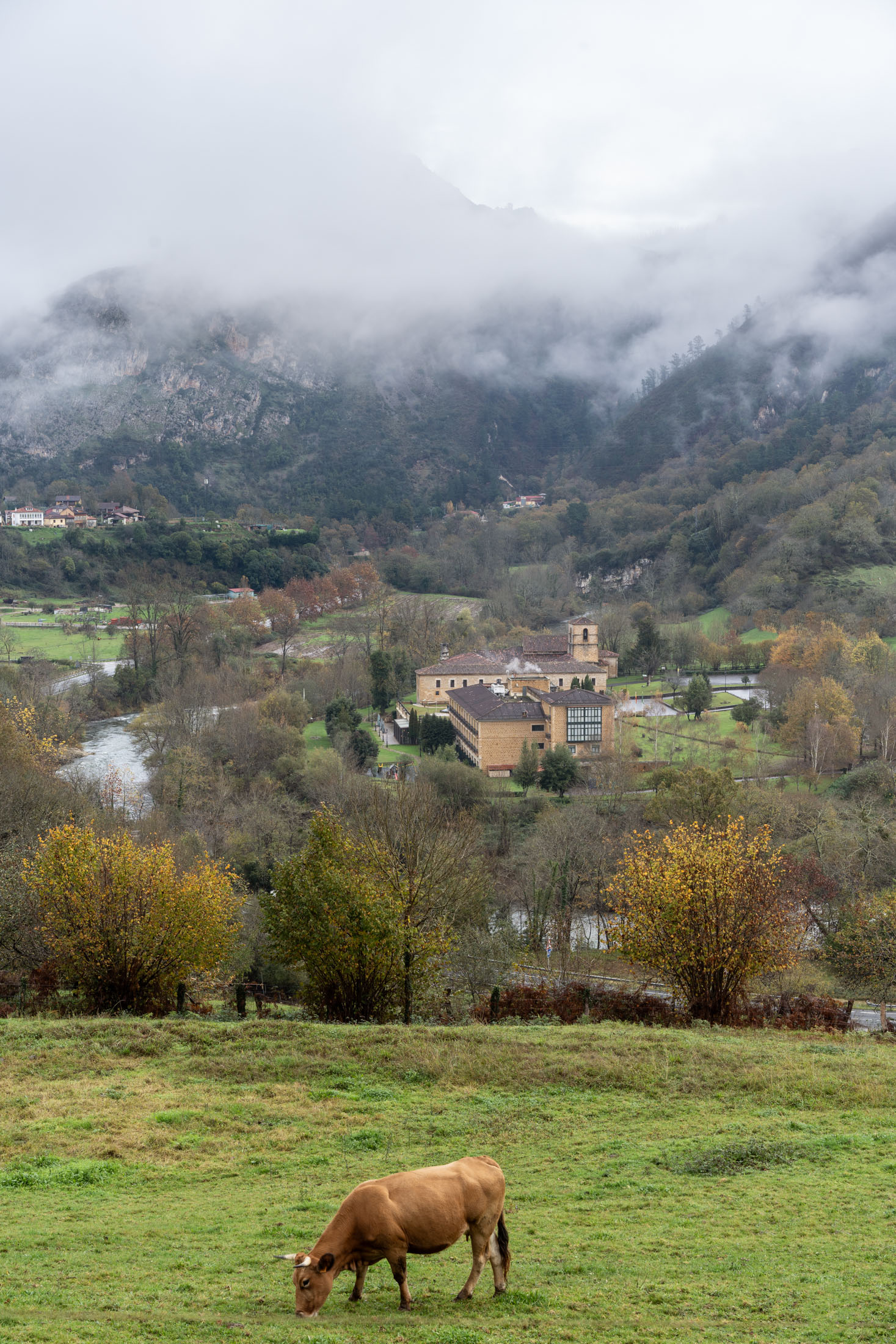
Parador de Cangas de Onís
Monasterio de San Pedro de Villanueva s/n , 33550, Villanueva (Cangas de Onís). Principado de Asturias.
+34 985849402
[email protected]Friday
Asturias is at its highest expression in these lands. In the village of Cangas de Onís, we recommend discovering the Roman Bridge, from where a copy of the 10th-century Cruz de la Victoria that commemorates the battle of Covadonga hangs, the Chapel of Santa Cruz and the Cortés Palace. To soak the culture of the Principado, you should enter some chigre (a type of bar) to see the show of pouring cider and taste it together with Cabrales cheese or some other delight of the many prepared in this region. A destination for hikers and mountaineers, next to the National Park of Picos de Europa, visit Casa Dago (visitors’ centre). The Royal Grounds of Covadonga, a place of pilgrimage which houses the Santina, is one of the places of special interest in the area together with the Covadonga lakes (Enol and Ercina) and the Cares route.
Day 7
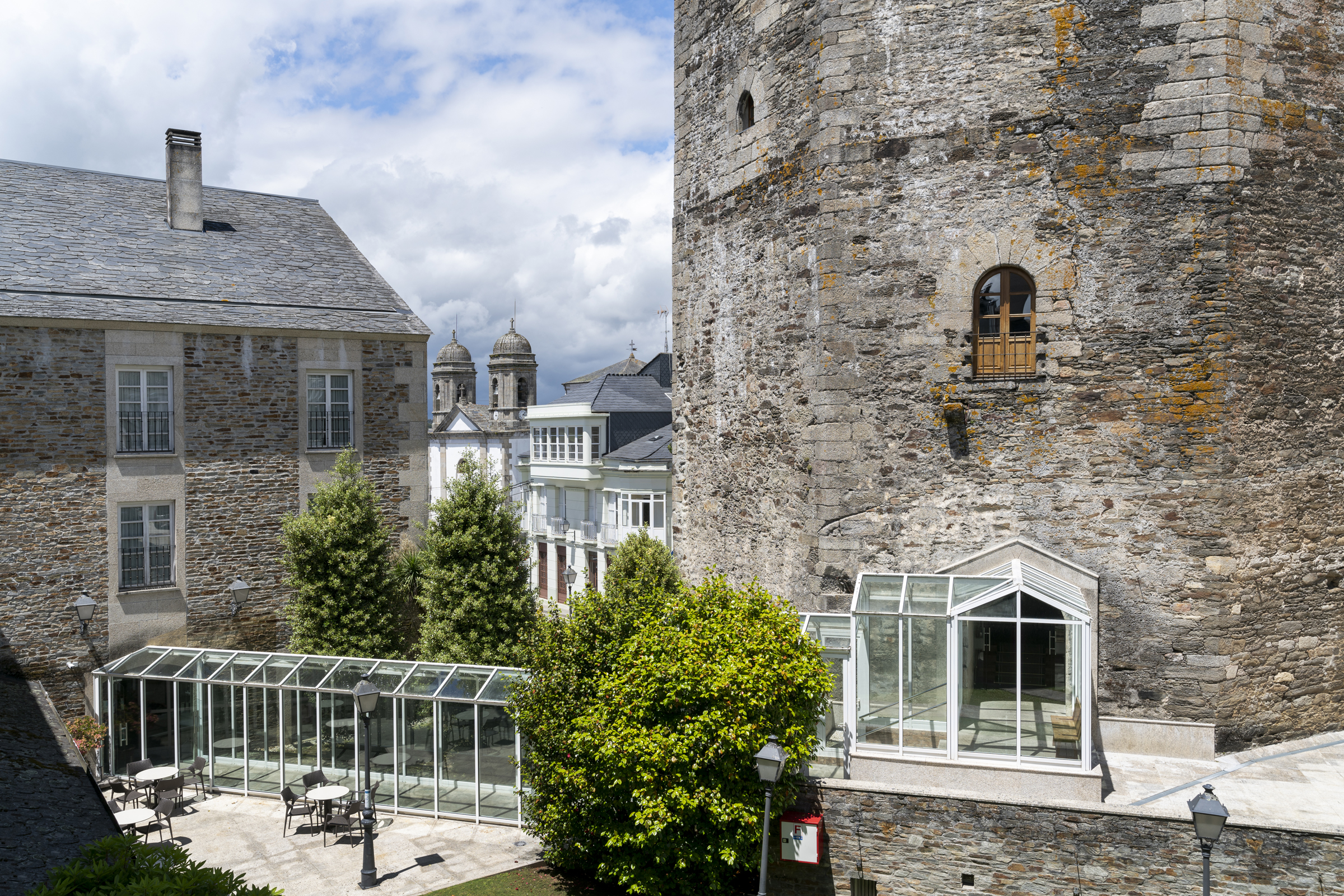
Saturday
On our way to inland territories, our destination is the ancient and stately Vilalba, a land full of legends where the river environment and the plain are the main features of the landscape. Close to Vilalba you will find the natural landscapes of the Magdalena and Ladra rivers and the medicinal pond of Alligal, with thermal springs. Here you will discover the most authentic Galician cuisine. We invite you to try traditional dishes such as pulpo a feira (boiled octopus with olive oil and paprika), meat and cheese pie or the delicious filloas (type of crepes) filled with cream, without forgetting some more comforting foods during the cold season as Galician soup or the stews. If you travel during Christmas, don’t miss the opportunity to try the precious and superb “Vilalba's capon”, a cockerel castrated at a young age and fattened for being eaten. You can’t forget to visit two nearby urban centres: Mondoñedo, a little cobblestone town surrounded by green mountains and declared a Historical-Artistic Site. The atmosphere here is magical. During the winter, the fog slides through narrow streets where time seems to have stood still, while in the summer its stunning cathedral, declared a National Monument, shines even brighter. Don’t forget to sweeten up with the delicious Mondoñedo cake. Another city you will love visiting is Lugo, where you will find the Roman wall, World Heritage Site because of its perfect state of preservation, and one of the best cuisines of Galicia, where tapas are a religion.

